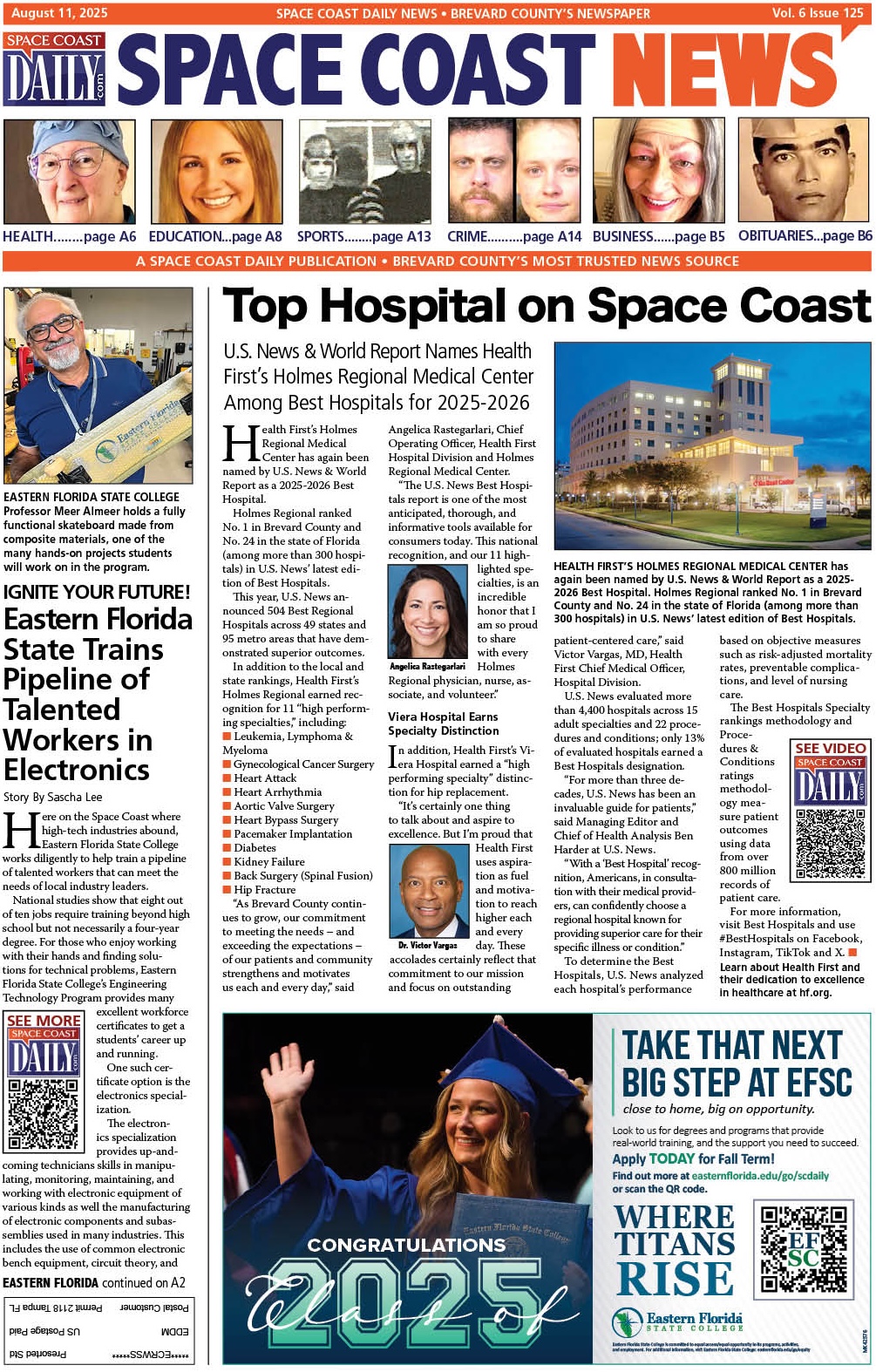Blue Origin Wins $78.25 Million Space Force Contract to Expand Launch Processing Capacity
By Space Coast Daily // October 8, 2025
responsible for acquiring and delivering resilient warfighting capabilities

BREVARD COUNTY, CAPE CANAVERAL, FLORIDA — The U.S. Space Force, through its Space Systems Command (SSC), on Tuesday awarded a $78.25 million contract to Blue Origin to expand space vehicle processing facilities at Cape Canaveral Space Force Station.
The award is the second under the National Security Space Launch (NSSL) “Commercial Solutions Opening” (CSO) effort, intended to augment U.S. capabilities for preparing spacecraft for launch.
Under the contract, Blue Origin will construct a new payload processing facility, slated for completion by 2028. The facility is expected to support multiple launch providers on Florida’s Space Coast, thereby increasing the throughput and resiliency of spacecraft processing ahead of missions.
“This second CSO award reflects our continued commitment to meet both national security and commercial launch requirements,” said Col. Dan Highlander, Director of Operations Integration for SSC’s Assured Access to Space directorate.
“This additional capacity will ensure USSF can continue to deliver responsive and resilient launch capabilities to the warfighter, and the public-private partnership behind the new capacity enables us to cost-share with commercial industry to our mutual benefit.”
Blue Origin, based in Kent, Washington, also operates Launch Complex 36 at Cape Canaveral, the launch site for its New Glenn rocket. The company stated that the new facility will enable it to support a higher launch cadence more effectively and integrate payloads more efficiently.
The SSC is responsible for acquiring and delivering space-based warfighting capabilities and currently manages an annual acquisition budget of approximately $15.6 billion.
The contract award to Blue Origin is part of the Space Force’s broader efforts to bolster launch processing, ensure resilience, and leverage commercial partnerships.
In April 2025, SSC awarded major mission launch contracts under the NSSL Phase 3 Lane 2 program. Under those awards, SpaceX, United Launch Alliance (ULA), and Blue Origin were selected as providers. SpaceX secured $5.9 billion for 28 missions, ULA $5.3 billion for 19 missions, and Blue Origin $2.3 billion for up to 7 missions (contingent on certification) through 2030.
Those mission awards currently place Blue Origin in a subordinate position relative to SpaceX and ULA. Still, the processing facility contract helps strengthen its infrastructure and positioning within the national security launch ecosystem.
According to defense reporting, the CSO mechanism is intended to fill gaps in spacecraft processing capacity that the existing government and contractor infrastructure cannot fully meet. The Blue Origin contract will expand that capacity in Florida.
Additionally, in September 2025, SSC hosted an Industry Day with representatives from 17 commercial space firms to shape future National Security Space Launch on-ramp opportunities under Phase 3.
Implications and Challenges
1. Capacity and resilience under pressure
Launch pace and manifest demands continue to increase, especially as commercial and national security payloads share common infrastructure. The cleanrooms, integration bays, and test systems that prepare satellites and rockets often become bottlenecks. The new facility is designed to alleviate these constraints and provide additional capacity.
2. Competitive positioning for Blue Origin
Blue Origin has had a more limited track record compared to SpaceX and ULA, especially in terms of certified national security missions. The facility bolsters its industrial base and ability to support more launches—potentially aiding its competitiveness in future bid cycles. However, Blue Origin’s New Glenn rocket must meet rigorous certification standards to support many national security payloads, which remains an ongoing process.
3. Shared risk via public-private cost sharing
The contract structure demonstrates a growing inclination by the Space Force to share risk and cost with private firms rather than fully bearing infrastructure burdens. This approach can accelerate modernization but also introduces dependencies on contractor execution and schedule.
4. Timeline and execution hurdles
The facility must be completed by 2028 to support the future launch cadence meaningfully. Construction, integration, qualification, and certification of critical systems (cleanrooms, environmental control, test equipment) pose schedule risks—especially given that SSC and its industry partners are also juggling other major contracts and projects.
The pace of national security launches is expected to remain high, with the U.S. Space Force pushing for both resilience and responsiveness. Blue Origin’s success in executing this contract on time and to specification could influence its credibility in future launch awards.
SSC may issue further CSO contracts or expand into other launch processing locations to diversify capacity. Continued coordination through initiatives like industry days helps shape commercial-government alignment and early planning.
Space Systems Command













